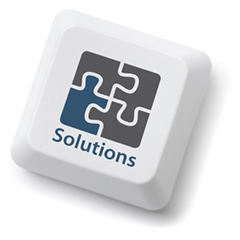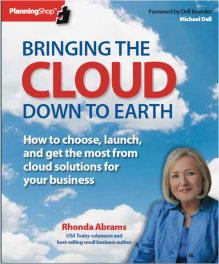 Be smart about evaluating emerging technology for your business. This article helps you become your own IT Consulting Expert by creating a process to evaluate technology for business use. Learn how to confidently evaluate new technology options like cloud computing, or SaaS (Software as a Service) to ensure your business leverages the technologies that make sense and stays away from technologies that would waste money and effort.
Be smart about evaluating emerging technology for your business. This article helps you become your own IT Consulting Expert by creating a process to evaluate technology for business use. Learn how to confidently evaluate new technology options like cloud computing, or SaaS (Software as a Service) to ensure your business leverages the technologies that make sense and stays away from technologies that would waste money and effort.
Evaluating Emerging Technology
“Cloud computing,” “knowledge management,” and “social networking” are technologies and processes that can either cause a company to waste money or help them to leverage emerging technology for significant business benefit. There are many terms and sales techniques that can cause anyone without technical knowledge to be tricked into wasting significant capital investment. For a mid-level manager or influencer in the company, how does one see through the hype and determine if these emerging technologies can truly help a business?
A repeatable process can help a business determine what can be used for maximum benefit. Create a management process to evaluate emerging technology using the following four steps:
1) Learn – Before doing anything else, spend time to learn what the emerging technology or the latest buzzword is all about. Google is a good starting point. Discussion forums and wikis can save hours of research. Talk to people and read trade magazines to get a thorough understanding before doing anything else. Knowledge is the best baseline before making any decision.
2) Choose – Next, pull out the company’s mission statement, goals and objectives and look across the business to see if the technology or technique will apply to the organization. Reach out to mid-level business analysts and mid-level IT management to help decide if it will move the business forward. A simple facilitated brainstorming session for an hour will go a long way in helping to match emerging trends with business goals and objectives. Create a matrix showing how the technology/technique compares with the current processes in place.
3) Provision – This step is the “gut check” toward enabling emerging technology/techniques in a business. In addition to the initial capital investment, processes will be changed and training will be needed. Make a complete estimate of how much this new technology or technique will cost the company and determine sources of funding. Make sure this step is not overlooked or minimized. Don’t go any further if there is not enough money to make it happen. Create a “Return on Investment” estimate that is realistic. Show how this investment will benefit the company in tangible ways (cost reduction, cost avoidance, time savings, etc.). If this cannot be done, then stop any further effort.
4) Promote – The last step is to get in front of the proper decision makers in the company. The first three steps in this process enable one to be a well-informed, critical thinker that has put effort into promoting the goals and objectives of the company. Always go into a meeting with the best for the company in mind. If the emerging technology or technique will change the core operations of the company, be ready to show in very tangible ways how the change will benefit the company. One easy way to communicate these ideas is to model the new processes in detailed steps to show the change and resulting benefit. Timing is a very important part of this as well. Unless the company has identified low-risk areas to adopt bleeding edge technology, emerging technologies should be chosen that have been successfully adopted by other companies and have a track record of success.
These four steps can influence a company in very meaningful ways when evaluating new technologies and techniques.
To help you get started, download the free eBook, “Bringing the Cloud Down to Earth” from Dell. 
If you’re interested to learn more about finding IT solutions “in the cloud,” we highly recommend this book from Dell as a must-have guide. Chapters include:
-
- Defining Cloud Computing and Software as a Service
- Benefits, concerns, privacy regarding using resources in the cloud
- Cloud computing security
- Migrating to and integrating Cloud IT Solutions
- and more…
If you’d rather not go it alone, talk to Great Lakes Computer about our IT Consulting services. We’ll work with you to help you make the decision that’s right for your business.




